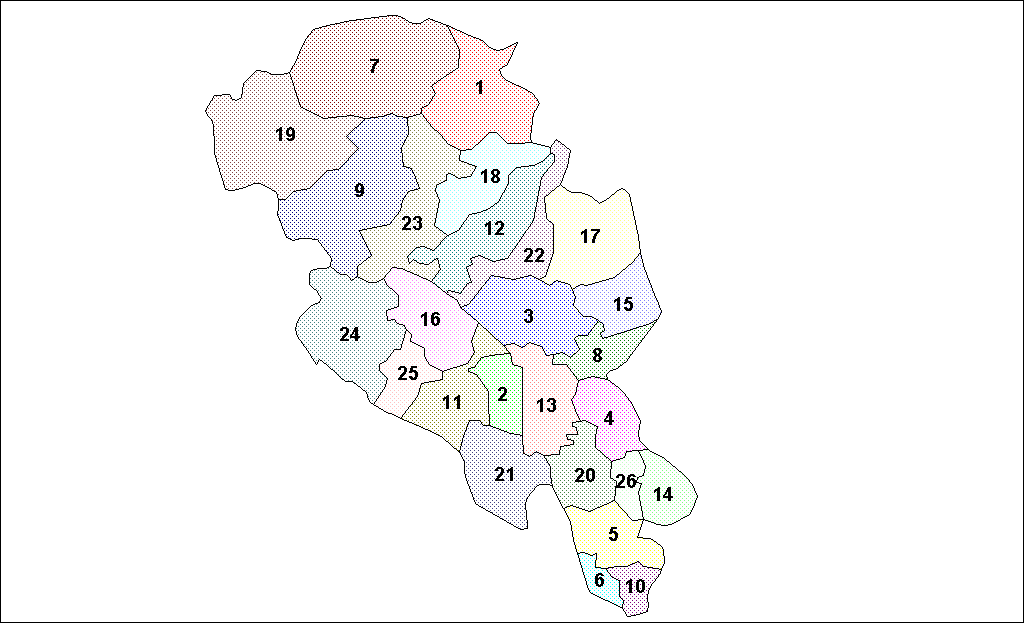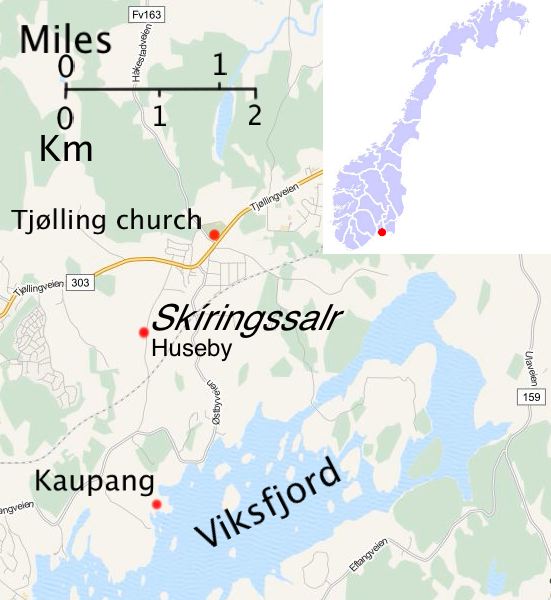|
Tønsberg Fortress
Tønsberg Fortress (''Tunsberghus festning'') was a medieval fortress and castle, located in Tønsberg, Norway which was defended by the fortress for over 300 years. It includes ruins from ''Castrum Tunsbergis'', Norway's largest castle in the 13th century, originally built by King Håkon IV, the grandson of King Sverre. History Dating in 871, Tønsberg is commonly believed to have been the oldest Norwegian town and one of the oldest recorded fortified locations in Norway. According to Snorri Sturluson, Tønsberg was founded before the Battle of Hafrsfjord under which King Harald I of Norway united Norway under his rule. Tønsberg was an important trading center and site of the Haugating, the Thing (assembly) for Vestfold and one of Norway's most important places for the proclamation of kings. In the 13th century, King Haakon Haakonson built a castle, ''Tunsberghus'', at the location of the modern Tønsberg municipality. It was located at what was formerly one of the most impor ... [...More Info...] [...Related Items...] OR: [Wikipedia] [Google] [Baidu] |
Tønsberg
Tønsberg , historically Tunsberg, is a city and municipality in Vestfold og Telemark county, eastern Norway, located around south-southwest of Oslo on the western coast of the Oslofjord near its mouth onto the Skagerrak. The administrative centre of the municipality is the city of Tønsberg. The city is the most populous metropolis in the district of Vestfold with a population of 52,419 in 2019. The municipality has a population of 56,293 and covers an area of in 2020. Tønsberg also serves as the seat for the County Governor of Vestfold og Telemark. Tønsberg is generally regarded as the oldest city in Norway, founded by Vikings in the 9th century. Tønsberg was established as a municipality on 1 January 1838 (see formannskapsdistrikt). The rural municipality of Sem was merged into the municipality of Tønsberg on 1 January 1988. The neighboring municipality of Re was merged into Tønsberg on 1 January 2020. It is home to Tønsberg Fortress on Castle Mountain, which in ... [...More Info...] [...Related Items...] OR: [Wikipedia] [Google] [Baidu] |
Vestfold
Vestfold is a traditional region, a former county and a current electoral district in Eastern Norway. In 2020 the county became part of the much larger county of Vestfold og Telemark. Located on the western shore of the Oslofjord, it bordered the previous Buskerud and Telemark counties. The county administration was located in Tønsberg, Norway's oldest city, and the largest city is Sandefjord. With the exception of the city-county of Oslo, Vestfold was the smallest county in Norway by area. Vestfold was the only county in which all municipalities had declared Bokmål to be their sole official written form of the Norwegian language. Vestfold is located west of the Oslofjord, as the name indicates. It includes many smaller, but well-known towns in Norway, such as Larvik, Sandefjord, Tønsberg and Horten; these towns run from Oslo in an almost constant belt of urban areas along the coast, ending in Grenland in neighbouring region Telemark. The river Numedalslågen runs ... [...More Info...] [...Related Items...] OR: [Wikipedia] [Google] [Baidu] |
Oppland
Oppland is a former county in Norway which existed from 1781 until its dissolution on 1 January 2020. The old Oppland county bordered the counties of Trøndelag, Møre og Romsdal, Sogn og Fjordane, Buskerud, Akershus, Oslo and Hedmark. The county administration was located in the town of Lillehammer. Merger On 1 January 2020, the neighboring counties of Oppland and Hedmark were merged to form the new Innlandet county. Both Oppland and Hedmark were the only landlocked counties of Norway, and the new Innlandet county is the only landlocked county in Norway. The two counties had historically been one county that was divided in 1781. Historically, the region was commonly known as " Opplandene". In 1781, the government split the area into two: Hedemarkens amt and Kristians amt (later renamed Hedmark and Oppland. In 2017, the government approved the merger of the two counties. There were several names debated, but the government settled on '' Innlandet''. Geography Oppland ... [...More Info...] [...Related Items...] OR: [Wikipedia] [Google] [Baidu] |
Oslo
Oslo ( , , or ; sma, Oslove) is the capital and most populous city of Norway. It constitutes both a county and a municipality. The municipality of Oslo had a population of in 2022, while the city's greater urban area had a population of in 2019, and the metropolitan area had an estimated population of in 2021. During the Viking Age the area was part of Viken. Oslo was founded as a city at the end of the Viking Age in 1040 under the name Ánslo, and established as a ''kaupstad'' or trading place in 1048 by Harald Hardrada. The city was elevated to a bishopric in 1070 and a capital under Haakon V of Norway around 1300. Personal unions with Denmark from 1397 to 1523 and again from 1536 to 1814 reduced its influence. After being destroyed by a fire in 1624, during the reign of King Christian IV, a new city was built closer to Akershus Fortress and named Christiania in honour of the king. It became a municipality (''formannskapsdistrikt'') on 1 January 1838. The city ... [...More Info...] [...Related Items...] OR: [Wikipedia] [Google] [Baidu] |
Sverre I Of Norway
Sverre Sigurdsson ( non, Sverrir Sigurðarson) (c. 1145/1151 – 9 March 1202) was the king of Norway from 1184 to 1202. Many consider him one of the most important rulers in Norwegian history. He assumed power as the leader of the rebel party known as the Birkebeiner in 1177, during their struggle against King Magnus Erlingsson. After Magnus fell at the Battle of Fimreite in 1184, Sverre ruled as sole king of Norway. Differences with the Church, however, led to his excommunication in 1194. Another civil war began against the church-supported Baglers, which lasted beyond Sverre's death in 1202. The most important historical source on Sverre's life is his biography, the '' Sverris saga'', in part written while Sverre was alive. This saga is likely biased, since the foreword states that part was written under Sverre's direct sponsorship. Correspondence between the pope and the Norwegian bishops can be used as an alternate source when it comes to church affairs. The saga and the ... [...More Info...] [...Related Items...] OR: [Wikipedia] [Google] [Baidu] |
Skiringssal
Skiringssal (Old Norse ''Skíringssalr'') was the name of a Viking Age hall which stood at a site now known as Huseby, about 0.73 miles (1.2 km) south-west of Tjølling, a settlement a little over east of Larvik, in the south of the Norwegian county of Vestfold. By extension the name also referred to the local ''bygd'', or settlement area, and in the 15th century it was probably used synonymously for the ecclesiastical parish of Tjølling. Skiringssal is mentioned in several early medieval sources, including the ''Ynglinga saga'', the ''Fagrskinna'' and the ''Sögubrot af nokkrum fornkonungum''. The name last occurs in 1445, in the form "Skirisall", in a hospital register from Tønsberg. This and other documents from earlier in the 15th century associate Skiringssal with locations in the parish of Tjølling. Archaeological excavations at Huseby have shown that a large hall was built there in the mid-8th century and went out of use by about 900. Excavations at Kaupa ... [...More Info...] [...Related Items...] OR: [Wikipedia] [Google] [Baidu] |
Oslofjord
The Oslofjord (, ; en, Oslo Fjord) is an inlet in the south-east of Norway, stretching from an imaginary line between the and lighthouses and down to in the south to Oslo in the north. It is part of the Skagerrak strait, connecting the North Sea and the Kattegat sea area, which leads to the Baltic Sea. The Oslofjord is not a fjord in the geological sense — in Norwegian the term can refer to a wide range of waterways. The bay is divided into the inner () and outer () Oslofjord, separated by the long by wide Drøbak Sound. The innermost part is known as the Bunnefjorden. Name In the period 1624–1925 the name of the fjord was (or ), since Christiania was the name of the capital in this period. The old Norse name of the fjord was , giving names to the counties of Vestfold ('the district west of Fold') and Østfold ('the district east of Fold') — and also the district Follo. Geography Each of the islands in the innermost part of the fjord has its own i ... [...More Info...] [...Related Items...] OR: [Wikipedia] [Google] [Baidu] |
Harald V Of Norway
Harald V ( no, Harald den femte, ; born 21 February 1937) is King of Norway. He acceded to the throne on 17 January 1991. Harald was the third child and only son of King Olav V of Norway and Princess Märtha of Sweden. He was second in the line of succession at the time of his birth, behind his father. In 1940, as a result of the German occupation during World War II, the royal family went into exile. Harald spent part of his childhood in Sweden and the United States. He returned to Norway in 1945, and subsequently studied for periods at the University of Oslo, the Norwegian Military Academy, and Balliol College, Oxford. Following the death of his grandfather Haakon VII in 1957, Harald became crown prince as his father became king. A keen sportsman, he represented Norway in sailing at the 1964, 1968, and 1972 Olympic Games, and later became patron of World Sailing. Harald married Sonja Haraldsen in 1968, their relationship having initially been controversial due to her ... [...More Info...] [...Related Items...] OR: [Wikipedia] [Google] [Baidu] |
Olav V Of Norway
Olav V (; born Prince Alexander of Denmark; 2 July 1903 – 17 January 1991) was the King of Norway from 1957 until his death in 1991. Olav was the only child of King Haakon VII of Norway and Maud of Wales. He became heir apparent to the Norwegian throne when his father was elected King of Norway in 1905. He was the first heir to the Norwegian throne to be brought up in Norway since Olav IV in the fourteenth century, and his parents made sure he was given as Norwegian an upbringing as possible. In preparation for his future role, he attended both civilian and military schools. In 1929, he married his first cousin Princess Märtha of Sweden. During World War II his leadership was much appreciated and he was appointed Norwegian Chief of Defence in 1944. Olav became king following the death of his father in 1957. Owing to his considerate, down-to-earth style, King Olav was immensely popular, resulting in the nickname ('The People's King'). In a 2005 poll by the Norwegian Broa ... [...More Info...] [...Related Items...] OR: [Wikipedia] [Google] [Baidu] |
Haakon VII Of Norway
Haakon VII (; born Prince Carl of Denmark; 3 August 187221 September 1957) was the King of Norway from November 1905 until his death in September 1957. Originally a Danish prince, he was born in Copenhagen as the son of the future Frederick VIII of Denmark and Louise of Sweden. Prince Carl was educated at the Royal Danish Naval Academy and served in the Royal Danish Navy. After the 1905 dissolution of the union between Sweden and Norway, Prince Carl was offered the Norwegian crown. Following a November plebiscite, he accepted the offer and was formally elected King of Norway by the Storting. He took the Old Norse name ''Haakon'' and ascended to the throne as Haakon VII, becoming the first independent Norwegian monarch since 1387. As king, Haakon gained much sympathy from the Norwegian people. Although the Constitution of Norway vests the King with considerable executive powers, in practice Haakon confined himself to non-partisan roles without interfering in politics, a practi ... [...More Info...] [...Related Items...] OR: [Wikipedia] [Google] [Baidu] |







.jpg)
.jpg)